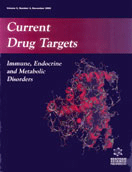Abstract
There are two main ways in which physicians will be urged to improve the outcome for their patients suffering from rheumatic diseases in the coming era, these are, early diagnosis and timely effective therapy. Current reserch suggests that in rheumatoid arthritis joint damage occurs early, often within the first 2 years and even in the absence of associating severe symptoms, is a call for action for primary care physicians as well as rheumatologists. Similarly in SLE patients, sometimes the treatments are ineffective or too toxic with sepsis or opportunistic infections often limiting their use or resulting in the death of the patient. As primary care physicians are the clinicians most frequently visited by patients with initial symptoms of the disease, they first need to learn when to suspect it as well as its complications, and when to refer the patient appropriately. Rheumatologists need to determine when and how to prescribe the most appropriate treatment, as well as how to incorporate the new drugs which are emerging on the scene. At the same time, earlier initiation of combination therapy with the disease modifying anti-rheumatic therapy holds an area of continued exploration. This new information has modified our approach to patients management. The age of ”wait and see“ is over.
Keywords: rheumatic diseases, sle, combination therapy, disease modifying drugs(dmards), interleukin-1 inhibitors, systemic lupus erythematosus(sle), cytotoxic agents, fludarabine, cladribine, stem cell therapy
 10
10


















